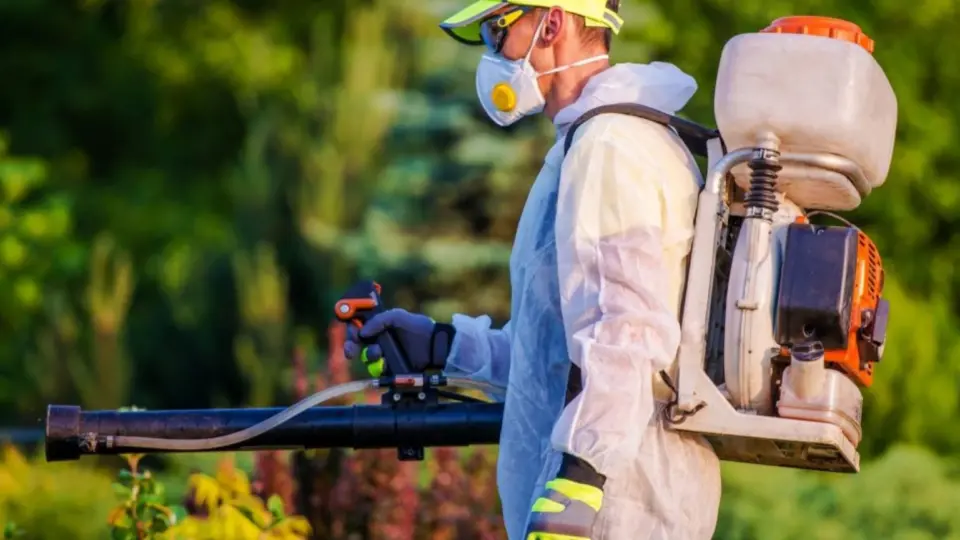
Pest control isn’t just about keeping creepy crawlers out of your home; it’s also tied to something bigger—property appraisals. When you’re getting your home valued, things like termite damage, rodent infestations, or even a history of pest issues can leave a mark on the appraisal. A pest-free home isn’t just more comfortable to live in—it can actually boost its value.
On the flip side, neglecting pest control can end up costing you more than you think, whether it’s through hidden damages or a dip in your home’s worth. It’s a connection that’s often overlooked, but understanding it can make all the difference in your property’s final price tag.
How does pest activity influence unexpected changes in property value?
Pest activity can have a surprising and sometimes significant impact on property value, often in ways that aren’t immediately visible. Here’s how:
How Pest Activity Influences Property Value Shifts
- Structural Damage Reduces Value: Termites, carpenter ants, and rodents can cause hidden structural damage to wood, insulation, and wiring. Even minor infestations can require costly repairs that lower a property’s market appeal and resale value.
- Inspection Red Flags: Pest issues flagged during home inspections can delay sales, lead to renegotiated prices, or cause deals to fall through entirely. Buyers often use infestations as leverage for price reductions.
- Stigma and Buyer Perception: Even after treatment, the perception of a “pest-prone” home can linger. Properties with a history of infestation may be harder to sell and may appraise lower due to buyer hesitancy.
- Neighborhood Reputation: If a community becomes known for pest problems (bed bugs, rats, termites), it can affect nearby property values as buyers become wary of moving into the area.
- Insurance and Lending Challenges: Severe infestations may make obtaining homeowners’ insurance or financing harder, which can reduce buyer interest and, thus, value.
- Interior Damage & Aesthetic Issues: Cockroaches, moths, and rodents can damage furniture, flooring, and walls—hurting visual appeal and contributing to lower offers.
- Maintenance Signal: Active infestations suggest poor home maintenance, leading appraisers or buyers to assume other unseen issues are present—further reducing value.
Pest activity isn’t just a nuisance—it’s a silent influencer in real estate economics. Staying ahead with proactive pest control preserves comfort and long-term property value.
Can untreated infestations lead to lower home appraisal results?
When pests are left unaddressed, they damage a home physically and raise red flags for appraisers and potential buyers. Here are key reasons why:
- Visible Structural Damage: Termites and rodents can chew through wood, drywall, and insulation, causing sagging floors, compromised beams, and weakened support structures that reduce a home’s appraised value.
- Signs of Neglect: Infestations suggest poor home maintenance, which appraisers factor into the final valuation. A neglected pest issue often signals other underlying concerns.
- Health and Safety Concerns: Mold from rodent waste, allergens from cockroach droppings, or insect stings can make a home less livable, negatively impacting appraisal outcomes.
- Odors and Stains: Persistent infestations can leave behind foul odors or visible damage to walls, ceilings, and baseboards, which detract from the home’s overall condition rating.
- Pest Presence Lowers Market Appeal: Appraisers consider marketability. If the infestation could deter potential buyers, it can lead to a lower appraisal figure.
- Insurance & Lending Red Flags: Severe infestations may result in insurers denying coverage or lenders demanding repairs before approving a loan.
Untreated infestations don’t just damage the home—they damage the home’s value.
Why do appraisers consider pest issues during property evaluations?
Pest problems may seem like a minor inconvenience, but to appraisers, they signal deeper concerns that can influence a property’s true value. Here’s why pest issues are taken seriously during evaluations:
- Indicators of Structural Damage: Termites, carpenter ants, and rodents often cause unseen damage to framing, flooring, and walls. When structural integrity is compromised, appraisers factor in repair costs and safety risks
- Impact on Overall Condition Rating: Pests typically lower a home’s condition rating, which is a key element in determining appraised value.
- Marketability Concerns: Homes with active or historical infestations may be harder to sell. Appraisers evaluate whether a property would appeal to buyers as-is or if pest issues might deter offers.
- Health and Sanitation Risks: Pests like cockroaches and rodents can create unsanitary conditions, triggering concerns about indoor air quality and health hazards.
- Potential for Recurring Problems: If pest access points or conducive conditions aren’t resolved, appraisers may note the risk of recurring infestations—further lowering confidence in long-term value.
- Influence on Insurance and Financing: Some pest problems can complicate insurance coverage or mortgage approvals, which appraisers consider when determining fair market value.
Appraisers look beyond surface appearance—pest issues tell a larger story about safety, maintenance, and long-term livability.
What role does pest control history play in home valuation decisions?
Pest control history is a silent factor that can significantly influence a home’s valuation. Appraisers, buyers, and lenders often view it as a window into the property’s maintenance habits, risk exposure, and future livability. Here’s how it plays a role:
- Proof of Preventative Maintenance: A documented pest control history signals that the homeowner has proactively maintained the property—often boosting buyer confidence and appraised value.
- Minimizes Red Flags During Inspection: Homes with no pest treatment records can raise suspicions. A strong pest control track record helps appraisers and inspectors rule out underlying damage.
- Reduces Risk of Hidden Damage: Regular treatment suggests the structure is less likely to have termite, rodent, or insect-related deterioration, which protects the home’s structural and cosmetic integrity.
- Improves Marketability: Buyers are more likely to pay a premium for homes with a clean, managed pest history. Appraisers take this into account when assessing demand-based value.
- Influences Lending and Insurance Approval: Lenders and insurers may look favorably on homes with pest management records, reducing barriers to financing and coverage—factors that appraisers may consider.
A clean, well-documented pest control history protects the home, preserves its market value, and smooths the path for sale or refinance.
Protect Your Property’s Value—Catch Pest Issues Before They Do Damage
Pests are more than just an inconvenience; they can secretly damage your home’s value. A property appraisal might look fine on the surface, but if pests have been lurking undetected, you could be in for a surprise.
From termites weakening your structure to rodents causing unseen damage, these issues can lead to lower appraisals or even delay a sale. Regular pest control services aren’t just about keeping bugs at bay—they’re an investment in your home’s value.
At Freedom Pest Services, we provide thorough inspections and expert treatments that help safeguard your property’s worth. Don’t let hidden pests lower your home’s appraisal—take control today and schedule a pest inspection.
